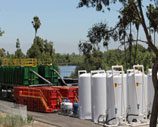Top Dewatering Methods According To the Experts.
Due to technological advancements, a number of effective dewatering and groundwater control techniques are available today that make many construction and mining projects easier and possible. Having said that, choosing the best dewatering or groundwater depends heavily on the unique ground conditions of each project. Construction Dewatering Contractors should carry out a thorough assessment of each project before Construction Dewatering Treatment System that fits the project.
Contractors must also select a dewatering method that will prevent significant effects of dewatering on the environment. Following are the top dewatering methods according to the industry experts:
Top Dewatering Methods:
All dewatering methods can be categorized into two types:
- Groundwater Control through Exclusion
- Groundwater Control through Pumping
Groundwater Control through Exclusion
Groundwater control through exclusion is done through the installation of water-resistant physical cut-off walls that stop groundwater from coming into the excavation. The cut-off wall can be constructed down to create a cut-off. Groundwater control by exclusion is most suitable for limiting the risk of external impacts. In some cases, groundwater control is used alongside pumping. The cut-off wall for exclusion can be made out of various materials and techniques, which include steel sheets, walls created by artificial ground freezing, grout curtains, and compressed air for tunnels.
Groundwater Control through Pumping
The method of dewatering through pumping involves removing groundwater with the use of wells and sumps. This is a temporary method of dewatering used mainly to create stable and dry conditions for excavations or construction. Groundwater control through pumping has four main pumping techniques that are most commonly used for dewatering. These are:
• Sump pumping
In this technique, water is allowed to sweep into the excavation and collected into sumps or pits, which is then pumped out using pumps.
• Deepwells
Deepwells technique uses bored wells that pump out water using submerged pumps. This method is most suitable for deep excavations.
• Wellpoints
In this technique, a ring or lines of shallow wells are made surrounding the excavation area through which the water is pumped out using Wellpoint pumps, which are connected through a header pipe.
• Ejector Wells
Ejector wells use a similar technique to wellpoints for deeper dewatering. This technique offers pore water pressure control in low permeability materials.
For more information contact Pure Effect today




